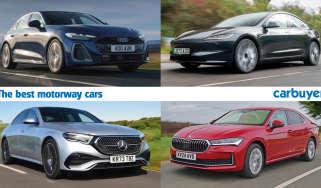Honda HR-V SUV review (2015-2020)
“The Honda HR-V is a spacious crossover with a stylish exterior and plenty of equipment inside”
Pros
- Clever folding seats
- Spacious interior
- Stylish design
Cons
- Noisy petrol engine
- Infotainment system feels dated
- Top-spec models expensive
The first Honda HR-V was launched in 1999 and, in hindsight, it foreshadowed all of the crossovers so popular in today’s car market. The original had eye-catching looks, a high-riding body and was economical, but at the time didn’t quite resonate with buyers like similar cars do today.
Almost 20 years later and the crossover sector of the car market is arguably the busiest of them all. The latest Honda HR-V may not represent the same daring step as the first, but it is a competitive, appealing rival to cars such as the Renault Captur, SEAT Arona and Peugeot 2008. The HR-V is more compact and svelte than the Honda CR-V, its bigger brother, with a sloping roofline, and handles for the rear doors that sit hidden in the door pillars to give the HR-V a similar aesthetic to a three-door coupe.
Despite its appearance, the HR-V is relatively big for a crossover, giving owners a more spacious, practical car than those driving a Nissan Juke, for example. This is important if you plan to regularly transport more than one passenger; those in the back will thank you for the extra head and legroom. Honda’s famous ‘Magic Seats’ are standard for the car too, allowing you to flip up the bottom cushions like cinema seats to accommodate items with odd proportions, like potted plants and even small bicycles. The HR-V has a spacious boot that’s easy to use thanks to its shape and big tailgate, and overall build quality is excellent.
More reviews
In-depth reviews
Buyers have four trim levels to choose from, with the entry-level model called the S. The next grade up is SE, followed by Sport and range-topping EX. S has the essentials (Bluetooth, cruise control, air con and more besides) but SE is our favourite, giving you a touchscreen with DAB radio and sat nav, plus parking sensors, a reversing camera, rain-sensing wipers and extra safety kit. Combine the SE trim with the 1.5-litre i-VTEC petrol engine, which feels smooth and is economical, and you have a very strong package. Top-spec EX adds luxuries like a panoramic glass roof and leather upholstery.
You can spec the 1.5-litre with either a manual or CVT automatic gearbox, but we’d steer clear of the latter, because it makes the HR-V slower and noisier than it needs to be. The Sport trim gets a VTEC turbo version of the 1.5-litre petrol engine, which is more powerful than the standard petrol engine and capable of the same 42mpg fuel economy. In late 2020, the 1.6-litre i-DTEC diesel engine was discontinued.
On the open road, the HR-V is comfortable, but this also means there’s some body lean in corners. While it isn’t quite as sharp as a Mazda CX-30, it’s a world away from traditional 4x4s and can be quite enjoyable to drive.
It makes for a good ownership proposition, too, as Honda is famed for its reliability, which should help offset the HR-V’s fairly high asking price. While too few HR-V owners participated in our 2020 Driver Power owner satisfaction survey, the larger Honda CR-V came 21st out of 75 cars overall. Honda as a brand finished equally well, coming seventh out of 30 manufacturers.
Safety shouldn't be a concern, thanks to a five-star result in Euro NCAP crash-tests and a long list of standard safety equipment.













